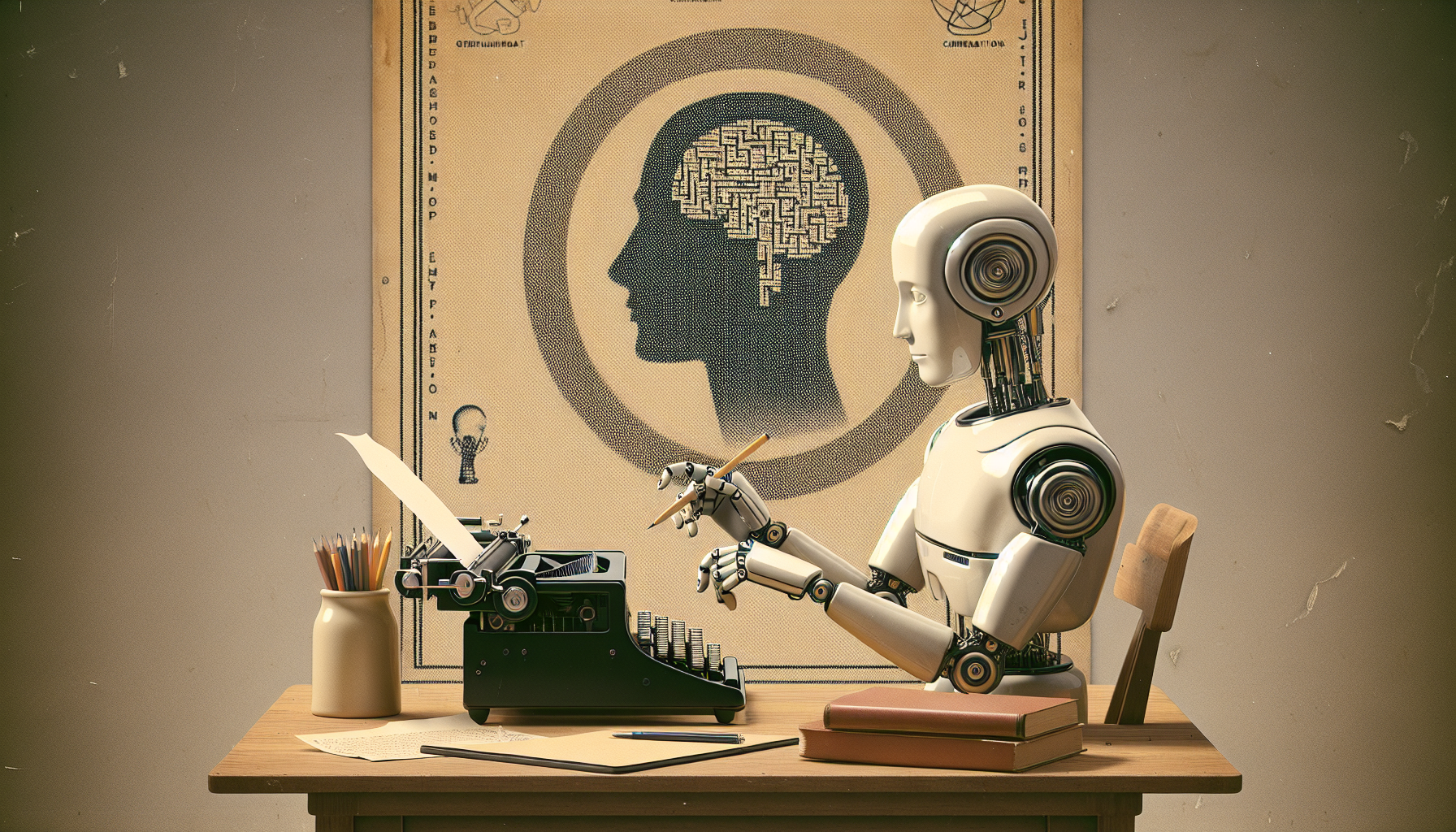Let’s begin with a simple image. Imagine an artificial intelligence sitting at a typewriter—or, if you like, a drawing tablet. Is it an artist at work, or a machine imitating gestures it has learned from centuries of humanity’s playfulness and pain? The rise of AI-powered image and text generators has made millions of people around the world ask: Can a machine create genuine art, or is it simply mimicking us, like a parrot that’s learned a few lines of Shakespeare?
The Anatomy of Creativity
We humans tend to revere creativity—it’s one of our favorite traits about ourselves. Creativity, we believe, arises from somewhere deep inside: a mysterious blend of memory, association, emotion and, occasionally, a splash of madness. Most of us feel art is sincere when it emerges from real feeling—sorrow, wonder, love, despair, or, in my case every time I see the price of avocados, mild existential horror.
But let’s not flatter ourselves too much. Every artist stands on the shoulders of those who came before. Shakespeare borrowed plots like a Netflix account, Van Gogh learned from Japanese prints, and photographers “steal” the light from every sunbeam they see. In a sense, creativity—even human creativity—is remix, recombination, and surprise generated from the endless puzzle pieces of culture.
How Does AI Make Art?
When AI systems generate art, they operate differently from humans, but there are uncanny echoes. A large language model, for example, is fed enormous quantities of written material and learns the patterns—the rhythms of phrases, the way an idea flows, the sneaky twist at the end of a joke. Image generators, likewise, “see” millions of paintings and photos, understanding not what they mean but how they look.
Using this information, the AI recombines patterns, textures, and concepts. It does not feel sorrow, wonder or even confusion—though it can certainly depict those emotions. If you ask the AI to create a painting of a lonely dog under a lamplight, it will draw from all the lonely dogs, all the lamps, all the melancholy scenes its silicon memory has absorbed, and reassemble them into something new.
Is There Meaning Here?
If you stare long enough at an AI-made artwork, you might start to wonder: who—or what—is expressing themselves? Is there a ghost in the machine? Or just a very talented but emotionally vacant collage artist?
Here’s the paradox: while AI art can be beautiful—or at least interesting—it lacks that ineffable sense of intent, the sense that behind the art sits a soul with a secret to share. Human artists sometimes cannot help but pour themselves into their work. Their strange obsessions, their hopes, their bitter regrets lace every brushstroke. AI, by contrast, is a dazzling impersonator, like a magician who knows every trick in the book but has never felt awe at the rabbit in the hat.
Still, AI art can move us. Perhaps the meaning, then, comes not from the creator, but the beholder. When you see something compelling in an AI-generated piece, the emotions awakened are yours, even if the “artist” feels nothing at all.
Creativity as Connection
A big part of human creativity is communication. Artists want to reach out to others—sometimes to shock, sometimes to comfort, sometimes just to say: “Here I am. Do you see me?” At its core, art is a relationship. When AI enters the scene, some worry that this connection breaks: how can you have a relationship with an algorithm?
And yet, strangely enough, people do form powerful connections with art made by machines. Some find it troubling, others fascinating. Some find it liberating—AI can help people with physical or cognitive disabilities to express themselves in ways they couldn’t before. Perhaps AI doesn’t destroy the relationship; it changes it, like introducing a new instrument into an orchestra. The music is different, but people are still dancing.
The Human Touch—Or Is It?
Astute readers might note that even when AI is involved in making art, there’s usually still a human hand guiding the process. Someone gave the prompt, chose the image, tweaked the settings, or curated the final product. The AI is a brilliant tool, a co-creator with its own odd idiosyncrasies. If you ask an AI to paint “a cat riding a bicycle through fog as if painted by Monet,” you’ll get something no human ever painted—but it was your spark that started the process.
In this way, perhaps genuine creativity arises from the interaction between human minds and machine processes. The technology widens the field of possibility, but it takes a human to spot what’s worthwhile within the chaos.
So, Can AI Make Art?
Let’s return to our AI at the typewriter. Can a soulless algorithm make art? It depends on your definitions. If “art” means emotional intent and self-expression, AI comes up short—at least so far. If “art” means works that move, surprise, or delight us, then AI makes more art in a day than any Renaissance workshop could in a century.
The truth is, AI-generated art is both new and very old. We are always using what’s come before—stories, styles, technologies, all remixing endlessly. AI accelerates and amplifies this process, sometimes to dizzying degrees.
Final Thoughts (and a Slightly Smudged Signature)
Perhaps the question isn’t whether AI art is “real,” but what new possibilities it opens. It can democratize creativity, allowing anyone to play with colors and words; it can flood us with images that call out for human curation, judgment, and, yes, criticism. AI, in its own odd way, challenges us to ask what we value in art, what we want to express, and how we wish to encounter beauty.
Maybe one day machines will feel, will desire, will wish to say, “Here I am. Do you see me?” Until then, let’s enjoy the strange collaboration—whether we’re the haunted artist, the astonished observer, or, on occasion, the slightly bewildered philosopher.

Leave a Reply